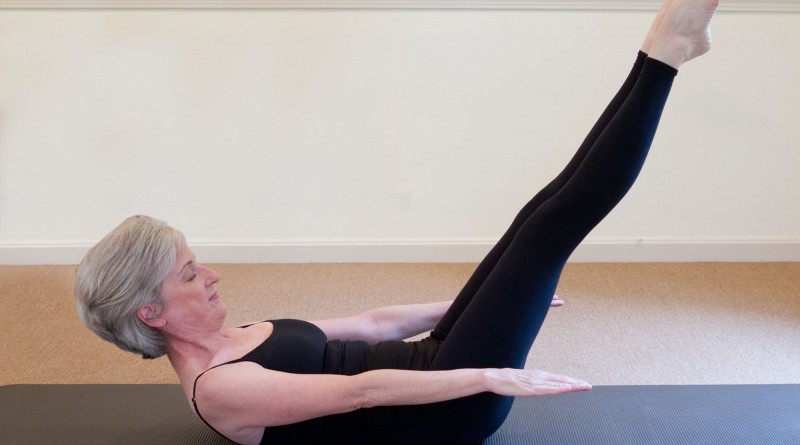Pilates for Hikers | Sports Medicine July 2012
Whether you’re tackling Mount Washington or taking a leisurely hike on the Appalachian Trail, adding Pilates-based exercises to your fitness mix will prepare your body and mind for going up, up, up, and down.
Practice the following Pilates exercises regularly to increase your balance, agility, and core and leg strength. Modifications are offered that make the exercises easier—the exercises should never cause pain. Then hit the trails using the “Pilates in Action” tips to make your next excursion a rewarding experience.
HUNDRED
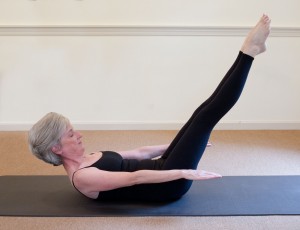 Purpose: Core strength makes carrying a pack easier and improves balance and agility.
Purpose: Core strength makes carrying a pack easier and improves balance and agility.
Technique: Lie on your back, knees bent to 90 degrees, arms by your side. As you exhale, bring your navel to your spine, lift your head, extend your legs. Pump your arms by your sides as if slapping your hands on water. Inhale for five pumps, exhale for five pumps. Work up to repeating this pattern 10 times.
Modifications: Keep your feet on the floor. Rest your head on the mat if you have neck problems.
SHOULDER BRIDGE KICK
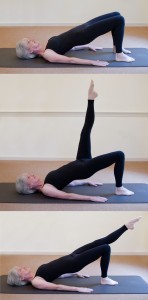 Purpose: Strengthening buttocks, core, and legs while offering flexibility to the hamstrings, spine, and hips. This challenging exercise covers everything you need to hike.
Purpose: Strengthening buttocks, core, and legs while offering flexibility to the hamstrings, spine, and hips. This challenging exercise covers everything you need to hike.
Technique: Lie on your back, knees bent, feet hip-width apart, arms by your side. Peel your spine off the mat one vertebra at a time until you rest between your shoulders. Lift one leg off the mat, extend it to the sky. Exhale as you lower the leg until parallel to the other thigh, inhale to lift. Repeat two to four times before placing the foot down on the mat, repeat with the other leg. Lower to the mat. Work up to doing this sequence four times.
Modification: Omit leg kicks and stay in the bridge for four deep breaths before lowering.
SINGLE LEG KICK
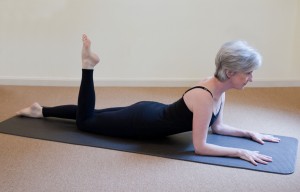 Purpose: Provides leg flexibility and strength for hiking and upper-body strength for poling and carrying packs.
Purpose: Provides leg flexibility and strength for hiking and upper-body strength for poling and carrying packs.
Technique: Lie on your stomach, legs straight, slightly apart. Prop up on your elbows and place your palms on the floor in front of you. Bring your navel to your spine. As you exhale, slowly kick one knee toward your bottom with a double beat. Inhale to lower your leg. Keep shoulders down, chest open and lifted, front of hips on the floor at all times. Alternate for a total of 10 kicks.
Modification: Place a pillow under your hips to avoid lower back pain. Kick slowly, with control, if you have knee problems.
STEP DOWN
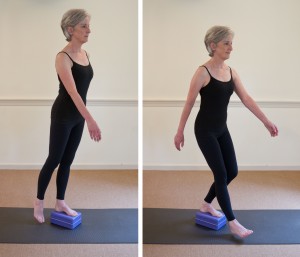 Purpose: This specialized strengthening for your thighs will improve your ability to control your descent and avoid knee strain.
Purpose: This specialized strengthening for your thighs will improve your ability to control your descent and avoid knee strain.
Technique: Stand with one foot on a four- to eight-inch step. Balance on one foot and reach your other heel to the floor in front of you. Bend your standing knee and keep your torso upright. Try not to transfer your body weight over the descending foot. Touch your heel to the floor and then return back to the start position. Work up to two sets of 10 reps.
Modification: Start with a two-inch step and build up to a higher step.
PILATES IN ACTION
BREATHING
Breathe deeply in through the nose and out through the mouth. Coordinate breathing with your hiking. Attention to breathing helps you stay attuned to your exertion level, allowing you to maintain a steady pace in any terrain.
CORE ACTIVATION
Engage your deep abdominal muscles by gently drawing your navel to your spine. When you do this during a hike you will notice less leg and back fatigue and better balance and agility.

